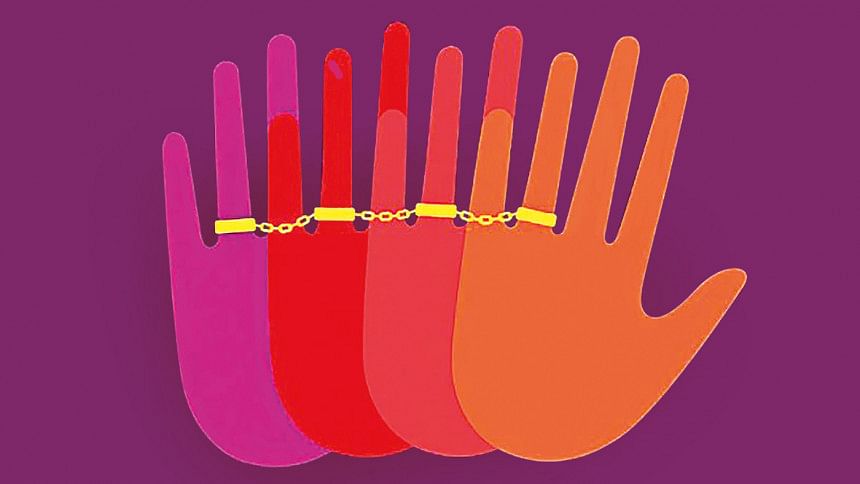Necessity to reform the Child Marriage Restraint Act

Child marriage is a major issue in Bangladesh, and reforming the Child Marriage Restraint Act is essential to addressing the problems associated with this practice. Bangladesh has Asia's highest rate of child marriage and one of the world's highest rates. Females in Bangladesh marry at a rate of 52 percent before the age of 18, and 18 percent before the age of 15. Child marriage devastates the lives of married girls and their families; it forces girls out of school, traps them in poverty, increases the likelihood of domestic abuse, and raises significant health problems for girls and their unborn children due to early pregnancy.
The Child Marriage Restraint Act of Bangladesh was enacted in 1929 and later amended in 1984, setting the legal age for marriage at 18 years for females and 21 years for males. At present, the main legislation regarding child marriage is the Child Marriage Restraint Act, 2017 which replaced the previous Act of 1929. Despite these legal provisions, child marriage remains prevalent due to various social, cultural, and economic factors.
Here are some reasons why the reform of the Child Marriage Restraint Act is necessary in Bangladesh:
First and foremost, the current law has several exceptions and loopholes that allow for child marriages in certain circumstances, such as parental consent or special circumstances. Section 19 of this Act authorises child marriage under specific circumstances, which ultimately shows the ways for the parties to child marriage with the court's authorisation. These provisions undermine the intended purpose of the law and provide room for exploitation. Reforming the law can help eliminate or tighten these loopholes.
Secondly, if we look closely at the law, we can see that all the offences are bailable, which ultimately inspires the parties to allow child marriage. When an offence becomes bailable, the accused has the right to seek bail from the court. As a result, it cannot have significant consequences in society for this offence.
Thirdly, this Act, in addition to penal provisions, gives the court the option of imposing a fine on the accused person. Another legal issue that must be addressed concerns the fine and payment of the fine. The fine which is imposed in the Act is so low according to today's socioeconomic situation and sometimes the people are not afraid of this kind of fine. Again, because different legal procedures are involved, realising the fine is extremely difficult and complicated. This ultimately undermines the fundamental penal provisions.
Fourthly, if we look at the administrative approach of this Act, it has provisions for the formation of administrative committees to raise awareness in society about the negative effects of child marriage. The functions of these committees must be more specific. The government has specialised officers for women and children in various administrative units, though their functions and powers are somewhat limited. As a result, even though they receive information about child marriage, those officers are unable to properly enforce their powers in their jurisdiction. To prevent child marriage, they must rely on the wishes of other administrative units. As a result, if we truly want to prevent child marriage, specialised departments should be entrusted with the task of enforcing this Act. Otherwise, it must rely on administrative units that are overburdened with their own work to enforce this Act.
Fifthly, there could be a focus on improving the implementation and enforcement of the Act. This may involve providing adequate resources, training, and support to law enforcement agencies, as well as promoting awareness among communities about the legal consequences and harmful effects of child marriage.
Sixthly, the lack of education is a significant factor contributing to child marriage. Reforming the law should be coupled with efforts to improve access to quality education, specially for girls. Education empowers children with knowledge, skills, and opportunities, enabling them to make informed decisions about their lives and delay marriage.
Seventhly, the Act could include provisions for establishing comprehensive support systems for individuals affected by child marriage. This might involve setting up helplines, counseling services, and safe houses to aid, protection, and rehabilitation for child brides and their families.
Eighthly, the Act could consider imposing stricter penalties for those involved in child marriages, including parents, guardians, and any other parties facilitating such marriages. It could also establish mechanisms to hold individuals accountable for violating the provisions of the Act.
Ninthly, child marriage is deeply rooted in social and cultural norms in Bangladesh. To effectively combat this issue, legal reforms should be accompanied by comprehensive strategies that challenge these norms and promote gender equality, education, and women's empowerment. Engaging with religious leaders, community influencers, and civil society organisations is vital in this regard.
It is important to note that legal reforms alone may not be sufficient to eradicate child marriage entirely. Addressing this complex issue requires a multi-faceted approach involving government commitment, community engagement, awareness campaigns, education, and economic empowerment initiatives.
The Writer is an Official Contributor, Law Desk, The Daily Star.

 For all latest news, follow The Daily Star's Google News channel.
For all latest news, follow The Daily Star's Google News channel. 



Comments